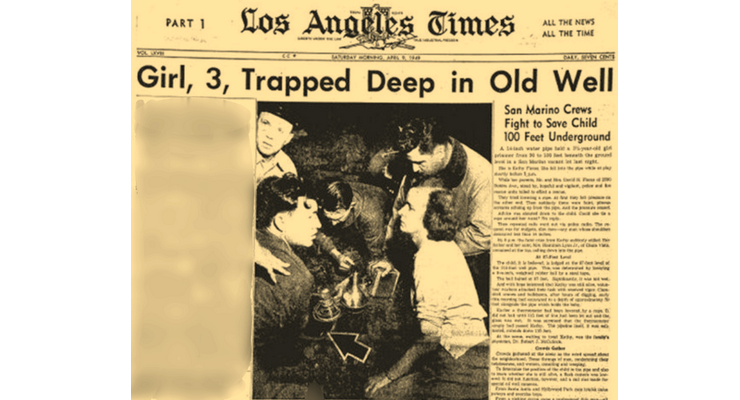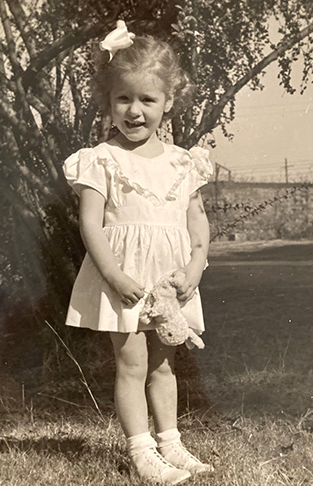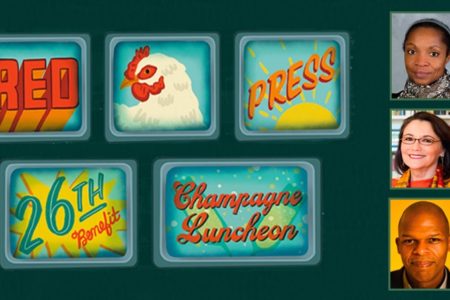
It was a sunny Saturday afternoon in San Marino in the spring of 1949 when a scream pierced the air. Kathy Fiscus, a blond-haired, blue-eyed toddler, had been playing with her sister and cousin in a field near their home. But in a split second, she vanished from sight. She had fallen into a narrow, 14-inch-wide well shaft that had been left uncovered by a former owner of the land.
What followed was a frantic, 48-hour rescue effort that gripped the nation and made history. Millions of Americans could watch the drama unfold live on their television screens for the first time, thanks to two pioneering local stations, KTTV and KTLA, that rushed to the scene with cameras and crews.
The Kathy Fiscus tragedy, as it came to be known, was a watershed moment for TV news, ushering in a new era of live coverage, human interest stories, and media spectacle.
Sadly, Kathy was found dead two days later. A crowd of about 10,000 had gathered.
On Monday, Feb. 26, the San Marino Historical Society will commemorate the 75th anniversary of the poignant event with a special discussion led by William Deverell, a renowned historian and expert on California and the West.
The talk, which is free and open to the public, will explore the social, cultural, and technological impact of the Fiscus tragedy, as well as its enduring legacy in the collective memory of San Marino and beyond.

For two days, rescuers attempted to remove 3-year-old Kathy Fiscus from a well as a crowd of neighbors watched and television stations broadcast the scene to viewers. [Image used by permission, courtesy of William Deverell/Rick Castberg Collection]
“The rescue operation became rapidly famous across the world, as the news, radio, and television press covered the event live,” Deverell said. “That television coverage pioneered live, remote broadcasting and changed TV news from that moment on.”
In March 2021, Deverell published “Kathy Fiscus: A Tragedy that Transfixed the Nation,” where he tells about how thousands of concerned Southern Californians rushed to the scene after the girl fell into the well, and how rescue workers – ditch diggers, miners, cesspool laborers, World War II veterans – dug and bored holes deep into the aquifer below, hoping to tunnel across to the old well shaft.
In it, Deverell also writes about how the event invented reality television and proved that real-time television news broadcasting could work and could transfix the public.
The tragic incident not only reshaped media coverage but also left a lasting imprint on American society.
“It changed media news, here and around the world,” Deverell said. “It proved that live television could work in remote sites and invented reality television of a sort.”

Kathy Fiscus lived with her parents and sister in San Marino, California. [Image used by permission, courtesy of William Deverell/Barbara Fiscus Collection]
A graduate of Stanford University, Deverell received his master’s and doctorate degrees in history from Princeton. His expertise in history and research, particularly at The Huntington, has informed his nuanced approach to exploring the Kathy Fiscus tragedy and its enduring significance. He directs the USC Libraries Collections Convergence Initiative.
Deverell is also one of founding directors of the Los Angeles Service Academy, a high school outreach initiative that teaches high school students about the infrastructural networks of Southern California.
The Crowell Public Library is located at 1890 Huntington Drive in San Marino. For more information, contact Linda Vera at lvera@cityofsanmarino.org or call (626) 300-0775.






